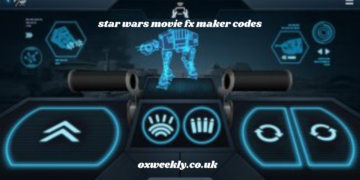The term “RC12FF cross” is gaining attention across various technical and professional fields. While its specific applications might vary depending on the industry, understanding its essential attributes, implications, and uses is critical for professionals and enthusiasts alike. This article delves into the RC12FF cross, unraveling its complexities, and exploring its significance in different contexts.
What Is the RC12FF Cross?
The RC12FF cross is a concept or mechanism whose precise nature is often tailored to its domain of use. Whether it pertains to engineering, coding frameworks, or specialized machinery, the RC12FF cross typically signifies a point of integration or convergence. At its core, the RC12FF cross embodies a balance of functionality and versatility, often facilitating seamless operations or problem-solving capabilities.
In specific terms, RC12FF cross might involve:
- A type of component in a machine or electronic circuit.
- A framework for evaluating performance or efficiency.
- A methodology for ensuring compatibility between disparate systems.
Key Features of the RC12FF Cross
Understanding the key features of the RC12FF cross can provide insight into its relevance:
- Flexibility: The RC12FF cross is often designed to adapt to varied scenarios. Whether it is a hardware component or a conceptual tool, its flexibility ensures broad applicability.
- Precision: Precision is a hallmark of the RC12FF cross. Its accuracy in delivering results or functioning effectively makes it a preferred choice in demanding applications.
- Efficiency: Efficiency is a critical aspect of the RC12FF cross. By streamlining processes or optimizing performance, it contributes to enhanced productivity.
- Durability: In many cases, the RC12FF cross is built to withstand challenging conditions, ensuring longevity and reliability.
Applications of the RC12FF Cross
The RC12FF cross finds use across various domains. Below are some prominent areas where it is particularly impactful:
1. Engineering and Manufacturing
In the field of engineering, the RC12FF cross might represent a pivotal component that integrates multiple systems. For instance:
- Machinery: As a part of mechanical systems, the RC12FF cross could act as a joint or connector ensuring smooth transitions.
- Automation: It may also feature in automated systems, supporting seamless control and precision.
2. Technology and Coding Frameworks
In the realm of technology, the RC12FF cross often plays a role in:
- Software Development: Acting as a framework or template to manage cross-functional processes.
- Data Integration: Ensuring compatibility between different software platforms, fostering interoperability.
3. Scientific Research and Analysis
For researchers, the RC12FF cross can be invaluable in experiments or analysis, offering reliable tools or frameworks that enhance accuracy and reproducibility.
4. Custom Applications
In niche areas, the RC12FF cross may be customized to fit specific requirements, such as:
- Environmental monitoring systems.
- Specialized industrial equipment.
Benefits of Utilizing the RC12FF Cross
The advantages of incorporating the RC12FF cross into a project or system are manifold:
- Enhanced Performance: Its design ensures optimal functionality, reducing errors and inefficiencies.
- Scalability: The RC12FF cross can often be scaled or adapted to meet growing demands or new challenges.
- Cost-Effectiveness: By integrating the RC12FF cross, businesses can reduce costs associated with maintenance and upgrades.
- User-Friendly: Many iterations of the RC12FF cross are designed to be intuitive, making them accessible even to those with limited technical expertise.
Challenges and Considerations
While the RC12FF cross offers significant benefits, it is not without challenges:
- Complexity: Its multifunctional nature can make it challenging to implement without specialized knowledge.
- Maintenance Requirements: Over time, wear and tear or software updates might necessitate regular maintenance.
- Compatibility Issues: In some cases, integrating the RC12FF cross with older systems can present difficulties.
To overcome these challenges, careful planning, expert consultation, and thorough testing are recommended.
How to Choose the Right RC12FF Cross
Selecting the appropriate RC12FF cross requires an understanding of your specific needs and the options available. Consider the following factors:
- Purpose: Define the primary goal of the RC12FF cross in your system.
- Specifications: Evaluate the technical specifications to ensure compatibility with existing components.
- Cost: Balance your budget against the required features and longevity.
- Support and Warranty: Look for models or systems that come with reliable customer support and warranties.
The Future of the RC12FF Cross
As technology evolves, so too does the potential of the RC12FF cross. Innovations in materials, design, and functionality are likely to expand its applications and improve its performance. Future developments may include:
- Smart Integration: Leveraging AI for automated adjustments and optimizations.
- Eco-Friendly Designs: Using sustainable materials to reduce environmental impact.
- Enhanced Durability: Introducing advanced materials for longer lifespans.
Conclusion
The RC12FF cross represents a unique blend of functionality and adaptability, making it an essential component or concept in various domains. By understanding its features, applications, and challenges, professionals can harness its potential effectively. As innovations continue to unfold, the RC12FF cross is poised to remain a cornerstone in its respective fields.

































